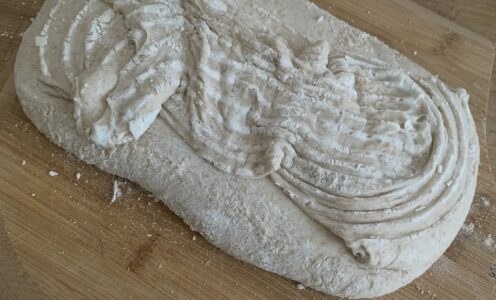Let’s take a look at the first three sourdough breads I’ve ever made at home. We will determine what went well, what went not so well, and why. At the end I will distill the key lesson of these three tests.
Sourdough #1: The Ugly
– 300g Weizenmehl T550 (white all purpose)
– 100g Weizenvollkorn (white whole wheat)
– 80g sourdough starter (20%)
– 300g water (75% hydration)
– 8g salt (2%)
I made my first sourdough bread 13 days after creating my starter. Was Keith strong enough after such a short life? Was I too impatient? These are questions I promptly brushed off.
The ambient temperature of that fateful night was a chilly 17.6°C, so I used 20% starter (weight of starter as a percentage of weight of total flour) and warmer water to help fermentation. Mix the flours, sourdough starter and water until just combined and let rest for 15 minutes. This is known as fermentolyse. It’s similar to autolyse, except sourdough starter is also added.
After 15 minutes mix in the salt and knead until dough passes the window pane test and reaches final dough temperature (FDT) of 26°C. The FDT, or DDT (desired dough temperature), for sourdough varies depending on which source you ask, but generally it’s in the ballpark of 24–28°C. I went for a FDT of 26°C due to the cold temperature in my kitchen, but in hindsight I should have aimed for 28°C since it took a reaaaally long time for my dough to bulk ferment.
It was getting late and despite my dough not rising very much, after about three hours, I decided to shape it, put it in a banneton and let it sit in the fridge overnight.
The next day, after chilling for about eight hours or so, it was time to bake. Coming out of the fridge, the dough looked a little weak. Not a great start. It also hadn’t risen much since last night. Another warning sign. But I was reckless and didn’t want to wait anymore, so I went ahead and flipped the dough out of the banneton.
Except–and here’s when I realised I’d made one of the worst mistakes anyone can make in the whole breadmaking process–I hadn’t floured my banneton well enough and the dough was stuck.
After failing to gently coax out the dough with gravity alone, I had no choice but to get in there with a butter knife.
I can’t think of anything worse than having gone through the many hours of mixing, bulk fermenting, shaping, and proofing, to then have all your efforts undone in the very final moments.
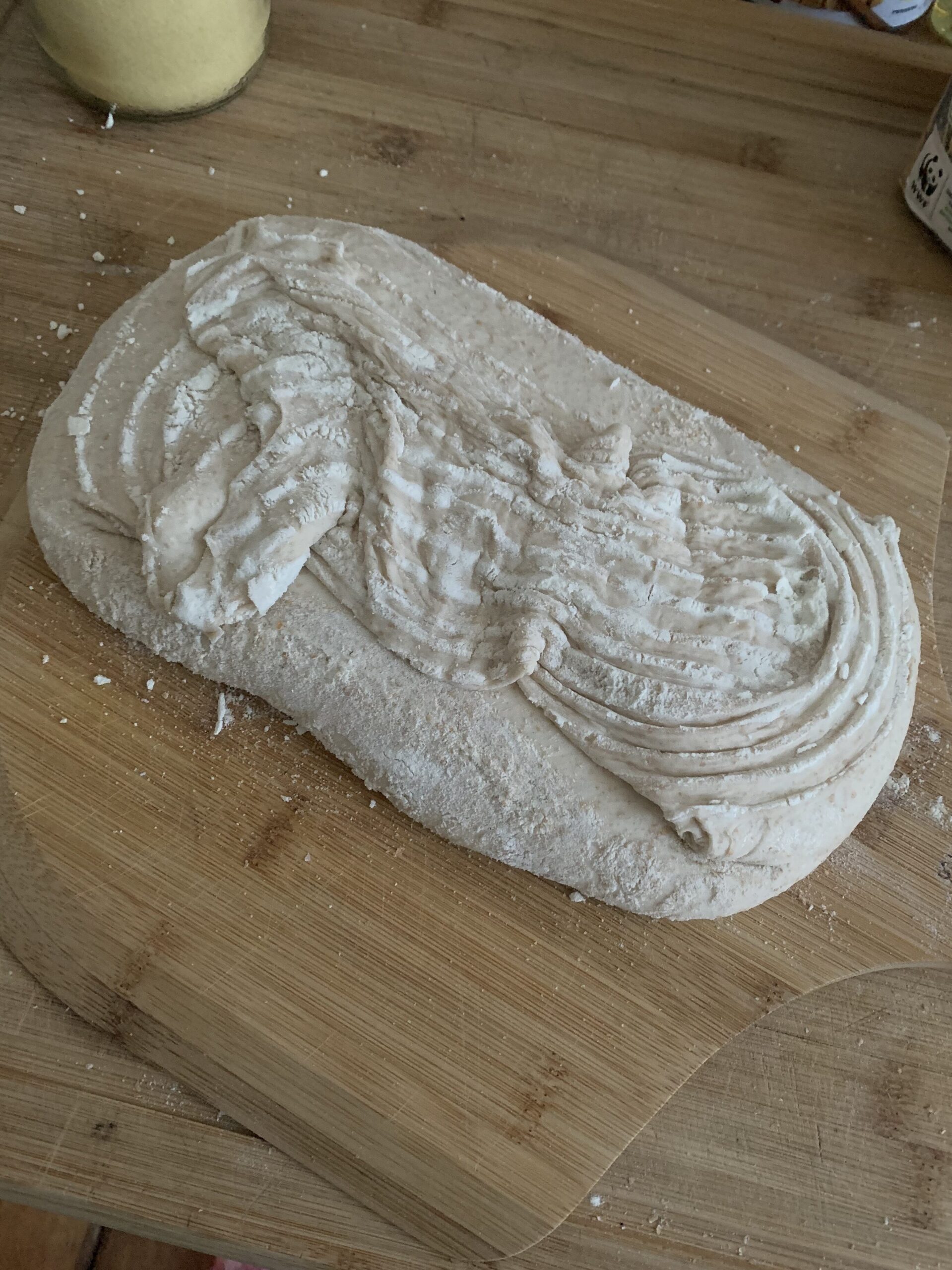
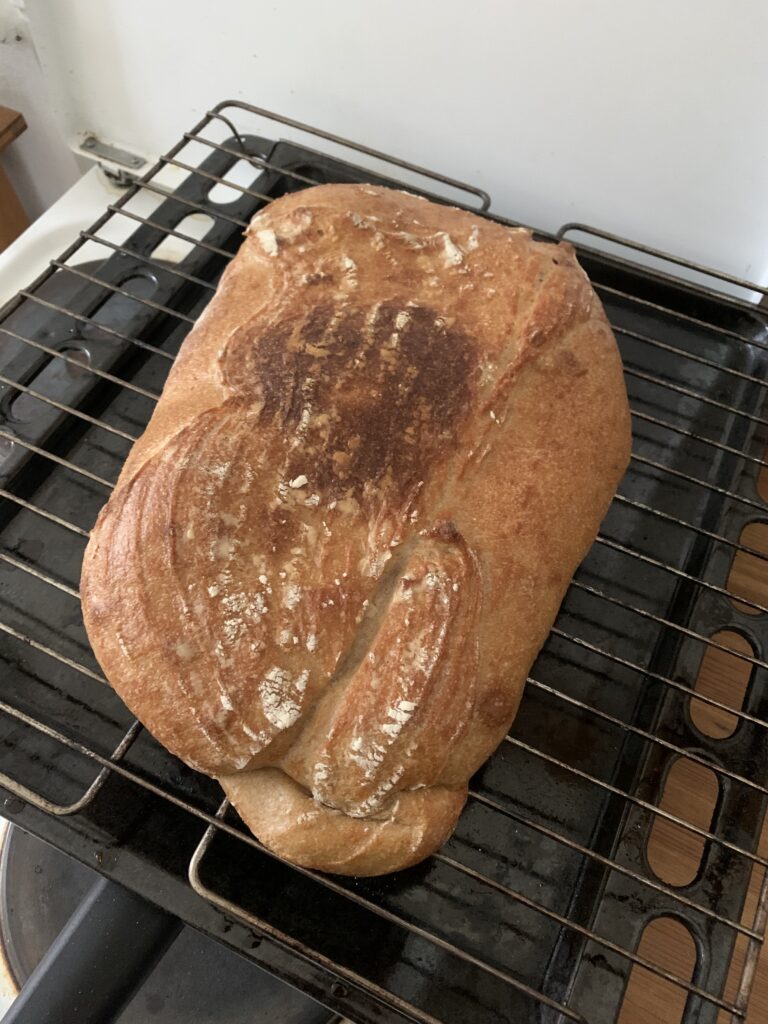
With a heart as deflated as the mess in front of me, I launched the dough into the oven to bake at 230°C for 25 minutes with steam, then a further 10–15 minutes without steam.
Now, bread that doesn’t look great can still be enjoyed, but with one major caveat: it must at least taste good. This one, unfortunately, ended up in the bin because the interior was dense and underfermented—a combination of the dough deflating as it was being ripped from the banneton, not enough bulk fermentation, and (probably) a weak starter.
Takeaways:
- Season your banneton, flour it well (I’m currently using semolina), and dry it out after each use.
- Use warmer water to help fermentation during winter.
- Make sure starter is very strong and active before using.
Sourdough #2: The Bad
– 300g Weizenmehl T550
– 150g Weizenvollkorn
– 90g sourdough starter (20%)
– 330g water at 35°C (73% hydration)
– 8g salt (1.8%)
Eager to redeem myself, I was at it again two days later, after waiting for my starter to strengthen some more. I also increased the amount of Weizenvollkorn to help boost the amount of protein in the dough to give it more strength (more protein = more gluten = stronger dough). Consequently, the dough was a little dry so I bumped up the amount of water just a touch. Starter increased by 10g to remain at 20% of the total amount of flour. Since salt is usually recommended within a range of 1.8% to 2% of total flour, I kept it 8g. Process was same as above.
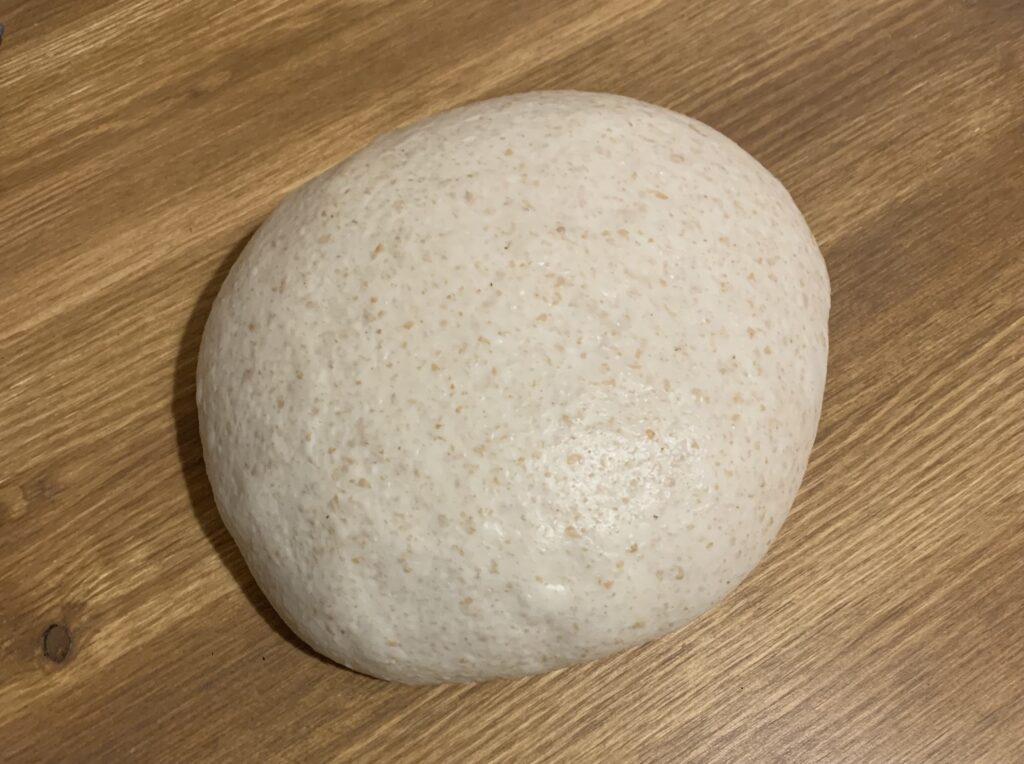
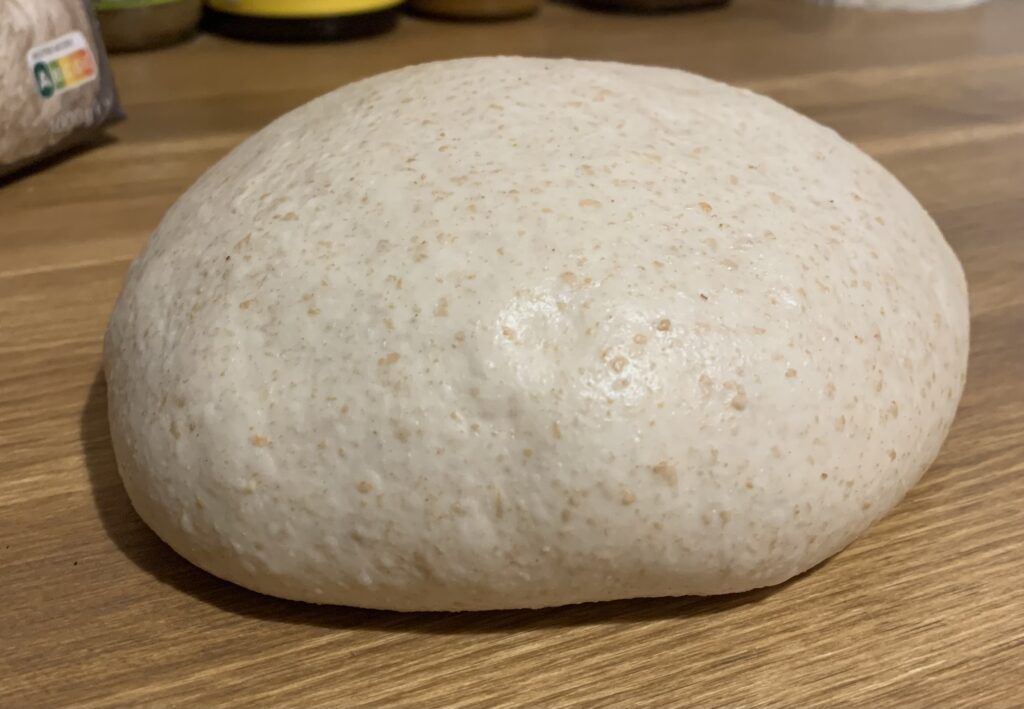
Unlike the first try, Sourdough #2 held its shape well and showed some bubbles on the surface underneath the skin after bulk fermentation. I failed to take notes during this part, but I believe it bulk fermented for four or five hours, with the warmer water helping a lot. The dough was then shaped and placed into a well-floured banneton—which had been seasoned and dried after the previous bake—and then put into the fridge to cold proof for 10 hours.
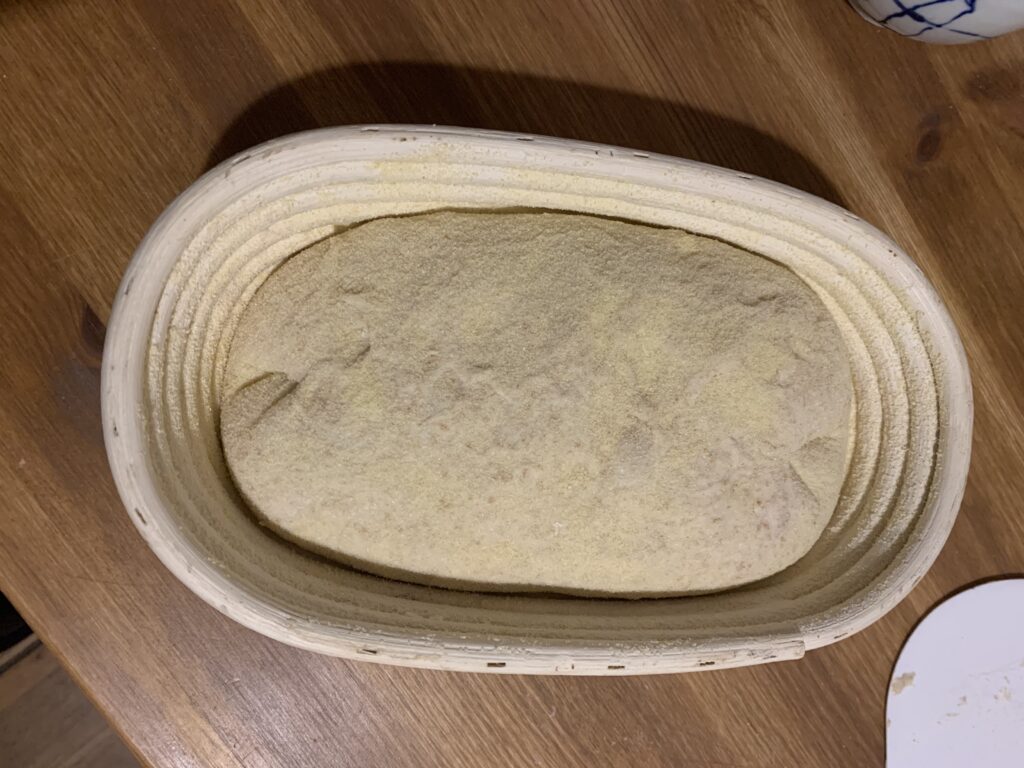
The next morning the dough plopped out of the banneton and onto the peel seamlessly. Sigh of relief for avoiding the same fate as Sourdough #1. Again, it held its shape, even after scoring, which was a good sign that enough gluten had been developed.
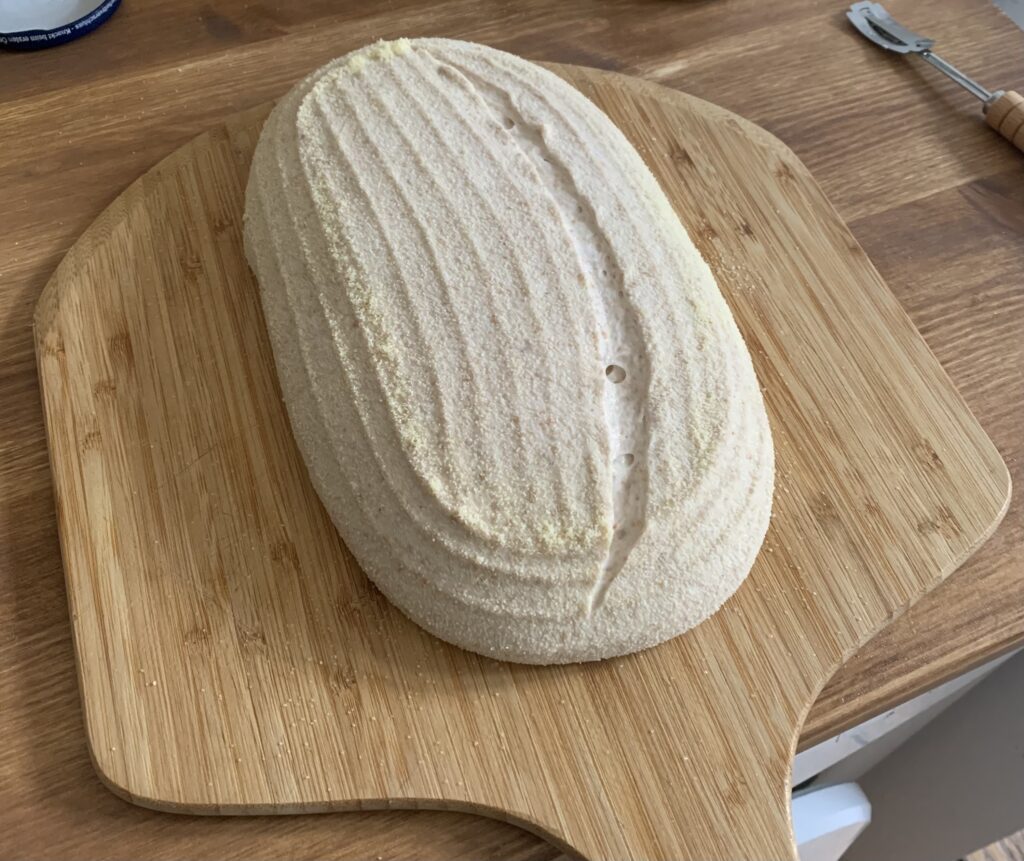
Bake like the previous loaf: at 230°C for 25 minutes with steam, then another 10–15 minutes without steam.
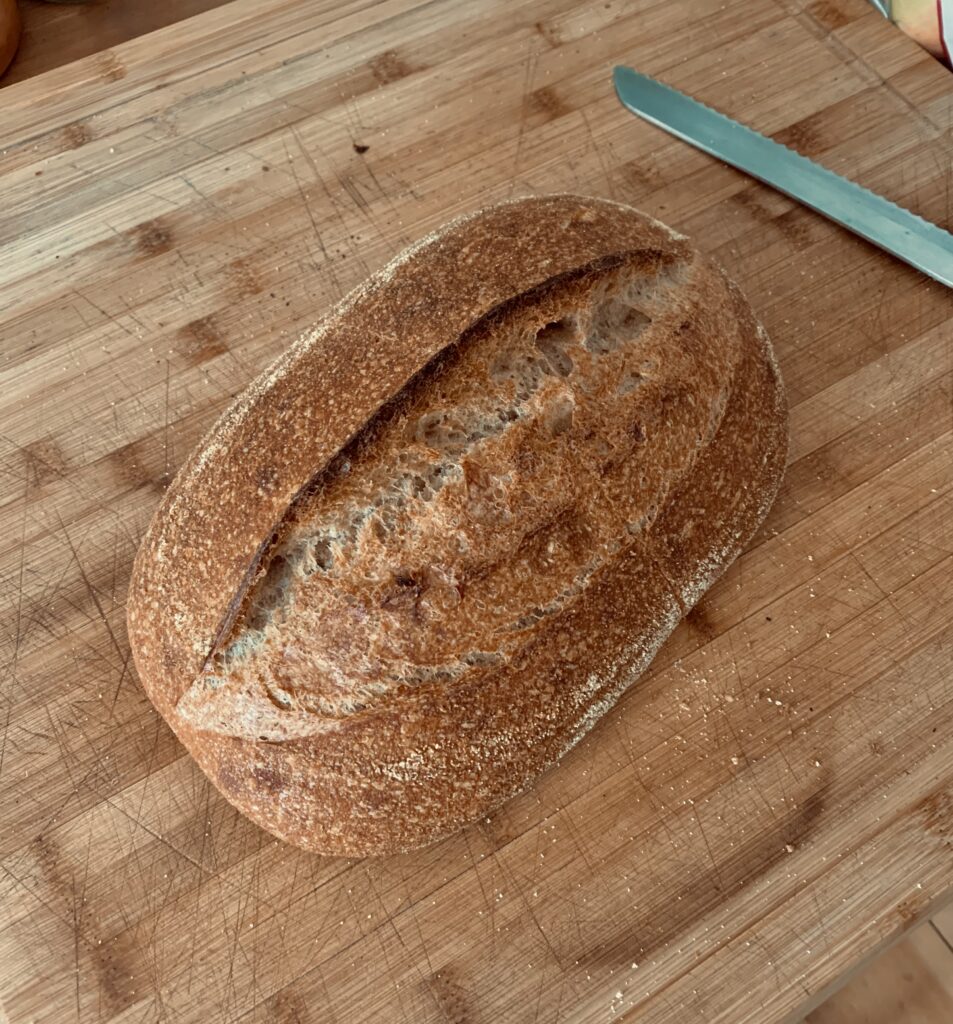
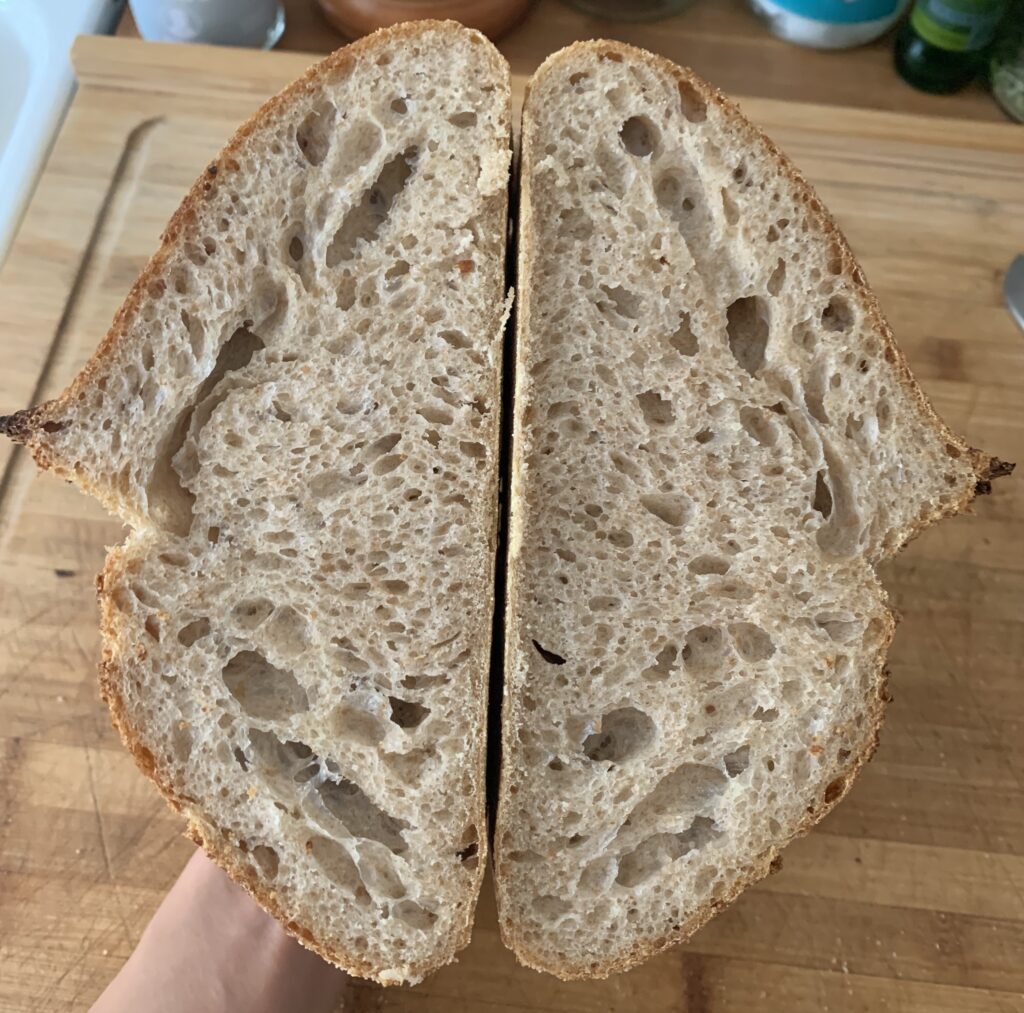
Sourdough #2 revealed a nice crumb, albeit a touch underproofed. The sides did not lift up from the bottom much, which is another indicator of underproofing; it could have benefitted from another hour or so of bulk fermentation. Nonetheless, it was a soft and tasty loaf, and at the end of the day, I was simply grateful to be able to eat some bread after all that work.
Takeaways:
- Increase amount of starter to accelerate bulk fermentation.
- Don’t rush bulk fermentation.
Sourdough #3: The Good
– 300g Weizenmehl T550
– 150g Weizenvollkorn
– 112g sourdough starter (25%)
– 330g water at 40°C + bit more (about 75% hydration)
– 8g salt (1.8%)
Increased amount of starter to 25% of total flour weight. Used slightly warmer water, with a bit extra since dough seemed a little stiff. Bulk fermented in the oven (turned off) for a full six hours, which was how long it took for dough to increase in size by 30%. Otherwise same method as the previous two times.
A good tip I’d picked up from Tom Cucuzza’s “When is Bulk Fermentation Done?” series on YouTube is to use your nose, among your other senses, to help determine if your dough is properly fermented. An underfermented dough will smell like raw flour; an overfermented dough will smell unpleasantly sour or like alcohol; and a well fermented dough will smell sweet with hints of mild sourness.
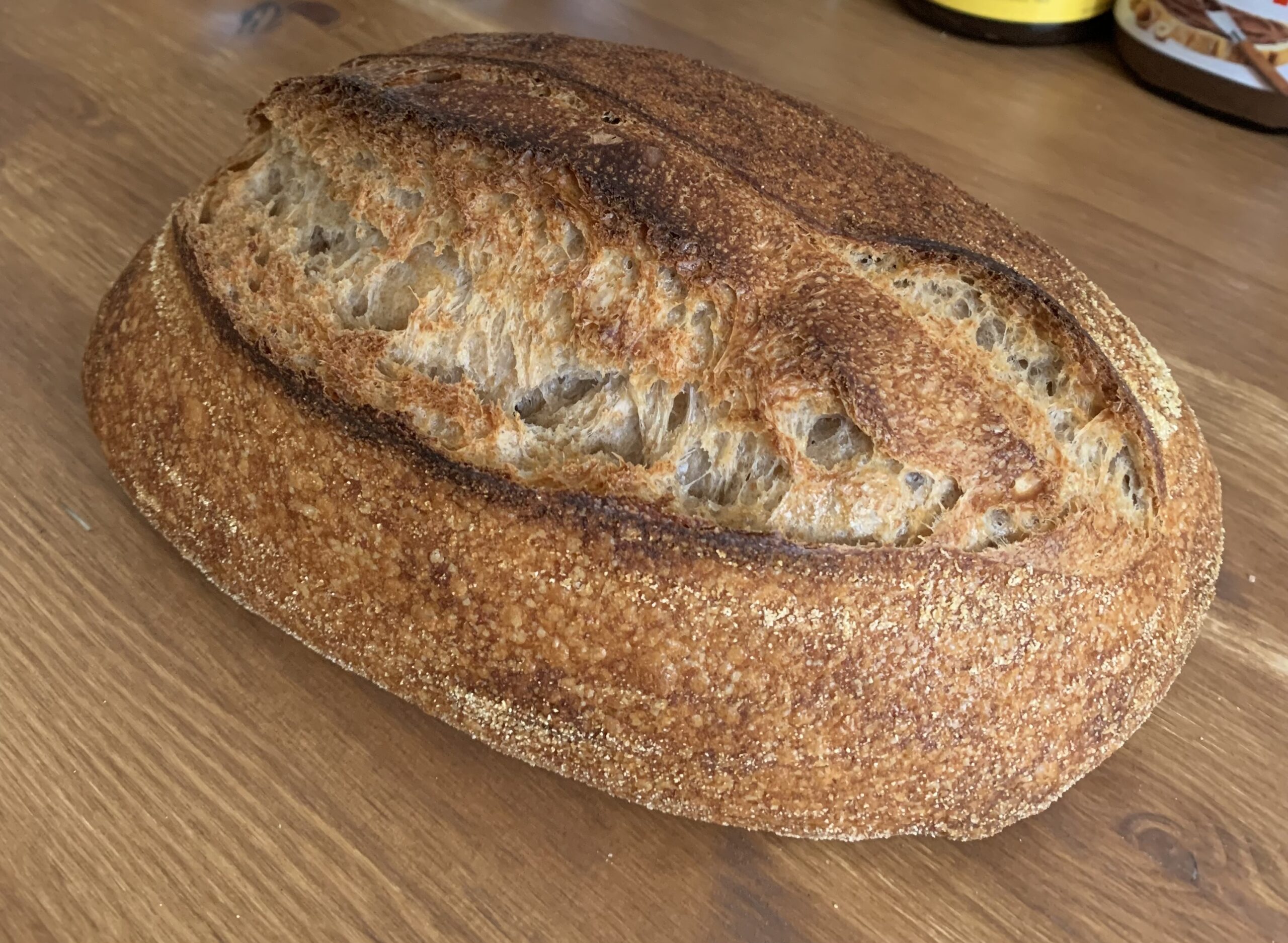
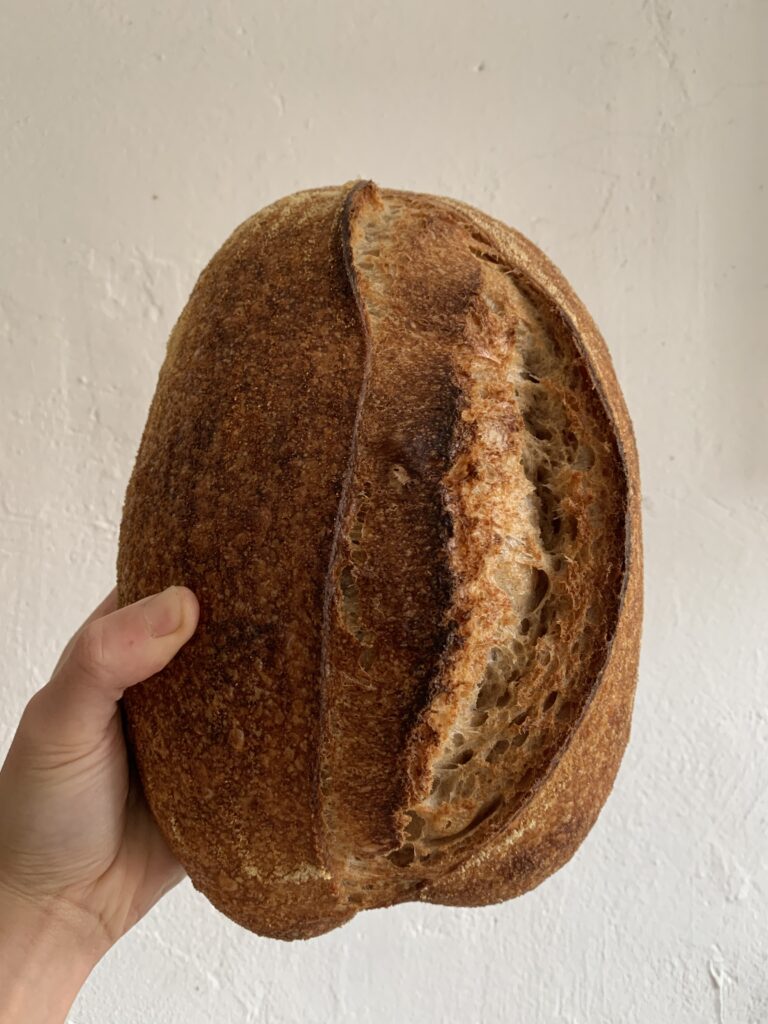
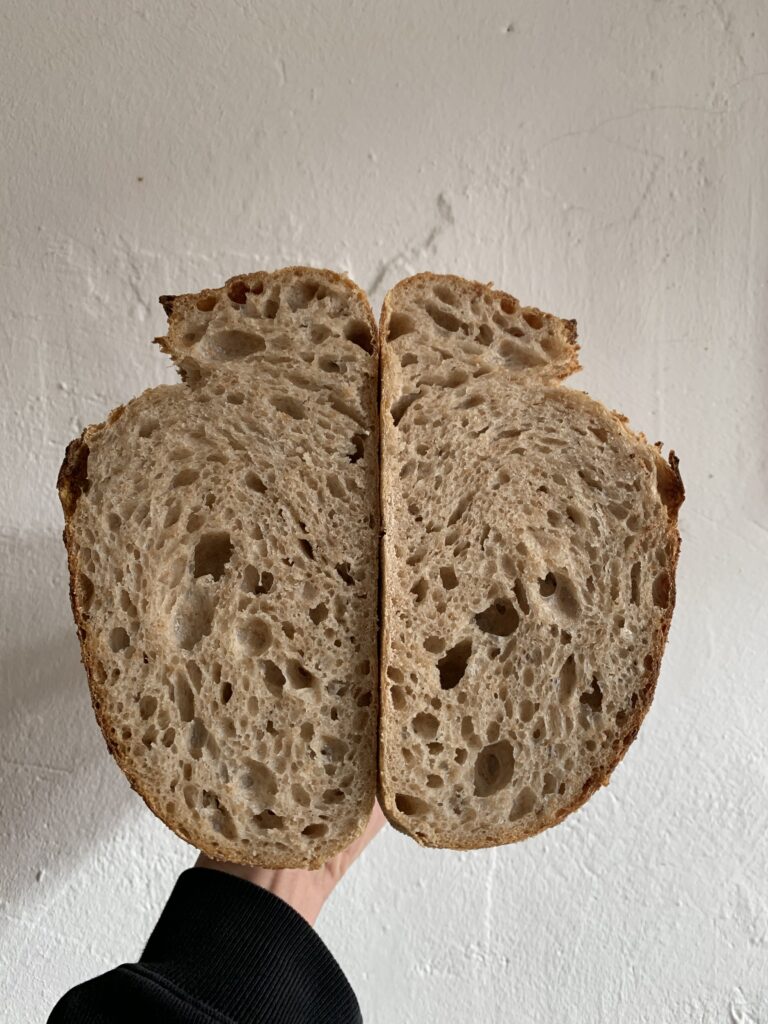
The end result of Sourdough #3 was a very nice crumb with a good rise. If you compare the edges of this loaf to the previous one, you can see that the edges of this one are more rounded, which indicates good fermentation. The scoring, however, was not super clean; seems like the cut sealed back up too quickly, leading to tearing on the right side. Might need to score a bit more deeply, while maintaining that 30–45° angle. But overall, this was a softer and tastier loaf than the last.
Takeaways:
- Start mixing dough earlier so that I don’t need to cut bulk fermentation time because it’s past midnight and I want to get to bed. This means that I will need to feed my starter the night before I want to make the dough, aiming to have it peak the next morning/early afternoon.
- Bulk fermenting in the oven really helps combat my drafty kitchen in the winter.
Overall lesson from the three trials
The major theme across the three bakes—the one thing that appears to have the biggest impact on the final result—is bulk fermentation. While it is important to have a good understanding of your starter, temperatures, gluten development, etc., ultimately these are factors you can manipulate to help achieve proper bulk fermentation. Think of bulk fermentation as the main bubble on your bread mindmap, with water temperature, ambient temperature, starter strength, gluten strength, etc. as the smaller bubbles pointing towards it. In the words of Arisdoughtle, mastering bulk fermentation is key to mastering good bread.
Thanks for reading and until next time,
Jen
